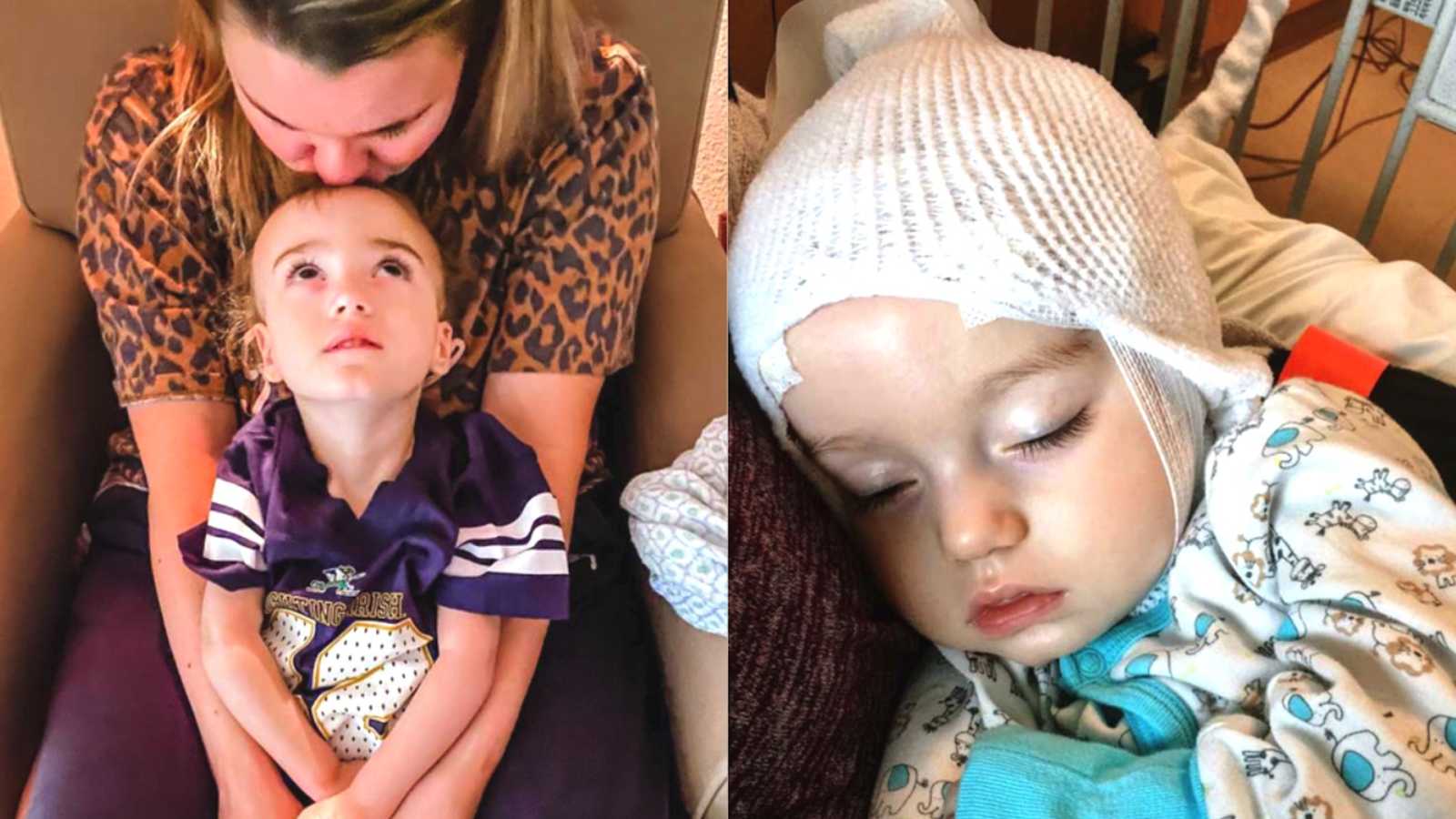“Preparations were being made weeks before Lucas’s arrival. Sure, little things happened in the months prior, such as buying a crib, having baby showers, and posting social media updates, but there was a different kind of preparation leading to his birth. As our story unfolded, we could see how God had already started preparing us for the battle ahead. During my last week at work, my mother-in-law posted a sticky note on my office door that said, ‘Labor into His Rest,’ a quote from one of our pastor’s sermons. Labor into His Rest became a cornerstone of my faith and something I would need to remember over the upcoming weeks, months, and even years now following Lucas’s birth.
On March 6, 2018, Lucas John Culp was born in Gilbert, Arizona, after a normal pregnancy and delivery. Lucas was a sleepy baby, but passed every newborn screen, and we were both set to be discharged from the hospital the next morning. I was in an immense amount of pain in the first 24 hours, as my bladder did not ‘wake up’ from my epidural for a full day. Lucas was sleeping and barely woke up at all, not even to eat. Two pediatricians reassured me this was normal and some babies are just more tired the first day. At the end of his first day, I complained to my husband, Brandon, I wanted a new night nurse. I didn’t like her from the night before. My mother-in-law overheard us talking about replacing the nurse. As she was walking out the door, she spun around and said, ‘God has put in place everyone who needs to be in place for Lucas. If he is the nurse, then she is to be the nurse!’
It was forceful and quite honestly a little shocking to all of us, including her. But I said okay, whatever, and moved on. That nurse’s name was Elma. She tried everything to get Lucas to eat. He was just too sleepy. Elma expressed her concern and asked if it would be okay to call in another doctor for a third opinion. She could not shake the feeling something was just not right, and I agreed. We know now Elma was placed there by God. She trusted her spiritual instinct and spoke up for Lucas. Elma and her family have actually continued to be in our lives. She has visited Lucas and shown up to his charity events and his birthday parties.

Dr. Vonn, the new pediatrician, came in and examined Lucas and agreed something was off. Assuming it was an infection, he sent us to the special care nursery to get Lucas a round of antibiotics. The doctor in the nursery immediately recognized Lucas’s behaviors as seizure activity and started making preparations for him to transfer to a hospital with a true NICU. We would go wherever had a bed open first. After a few agonizing hours, we were in an ambulance on our way to St. Joe’s.
The neurologist, Dr. Vinodh Narayanan, who happened to be on call that night at St. Joe’s, is technically a neurogeneticist, a doctor who studies genetics and the brain. Very quickly, Dr. Narayanan recognized Lucas’s symptoms and ordered the proper tests, which allowed him and the other NICU doctors to agree on a diagnosis within only hours of being admitted. Typically, rare genetic conditions can take weeks, months, or sometimes even years for doctors to diagnose. After 24 hours, an EEG, MRI, and several other tests, the doctors informed us Lucas needed to go to Phoenix Children’s Hospital (PCH). They told us PCH was the only hospital that had the medication to treat the condition they believed Lucas had, and the sooner he got it, the better chance he had.
We do not doubt this early intervention played a massive role in the days ahead. Within 20 minutes, we were at Phoenix Children’s Hospital. The nursing staff hooked Lucas to another EEG and started the medication necessary for this apparent condition. By this point, I was a mess. Exhausted, yet jittery. Worn down, but unable to sit. The NICU allowed us to stay in a private room for parents right inside the NICU, another miracle as there are only two of these rooms, and the place was full. God had it prepared for us. The next day was day 4 of Lucas’s life, and I hadn’t been able to hold him since we left Mercy Gilbert at just 36 hours of life. I was distraught all night and looking for anywhere to get the Word of God in my ears, and the internet connection in the hospital was weak. The next morning my mother-in-law came in with a book called God’s Creative Power by Charles Capps and said she felt led to bring it to me.
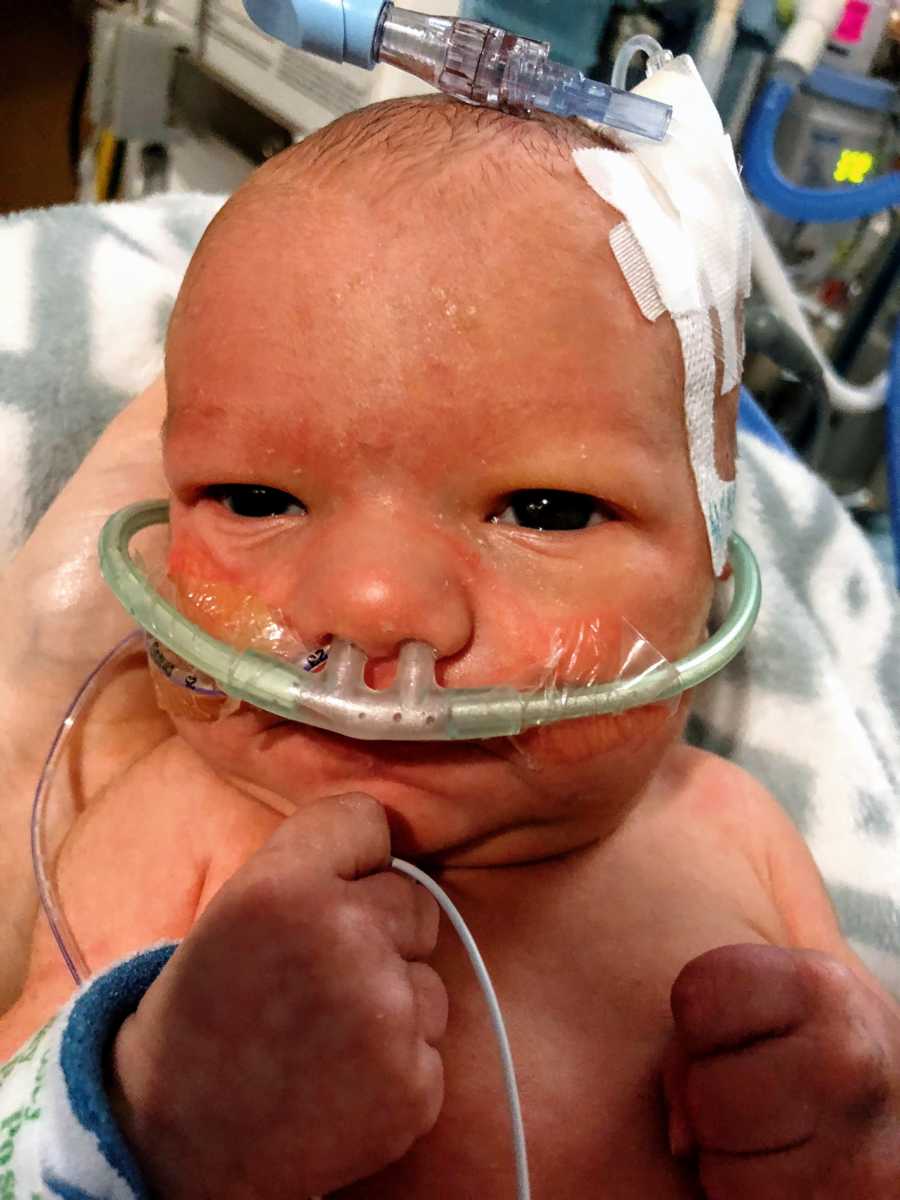
They took his EEG wires off that morning, and I finally got to hold my baby after 2 long days. I rocked him and read the healing scriptures aloud to him while praying to God to continue to lead and guide us through this journey. The next day, the geneticist came to meet with us in a boardroom within the NICU. The geneticist, the NICU charge nurse, and Lucas’s nurse sat across from our family and me. She began to tell us Lucas has a very rare genetic disorder called Non-ketotic Hyperglycinemia (NKH). She was 100% certain genetic testing would confirm a terminal diagnosis of NKH. If by some miracle, he did survive, he would never be ‘normal’ (a term I have grown to loath).
She did not believe he would leave the NICU. She told us all of the recommended treatments for NKH were ‘experimental’ and would not cure him. She stated we would certainly be making a ‘quality of life decision.’ However, I knew this would not be our story. In my spirit, I knew God healed him. I slammed my hands on the table and said, ‘We are not just going to let him die! Are we done here? I am going to go hold my baby.’ I stood up, and my family followed me right out the door.
Less than 24 hours after being told Lucas was going to die, he woke up! He had been out of it since his first dose of anti-seizure medication he had received at our birthing hospital. Lucas was never intubated, which is also uncommon among NKH diagnosis’ like his. That day, the geneticist had a different attitude. Test results showed after just one dose of the ‘experimental’ treatment, Lucas’s glycine levels were half of what they were the day before and close to being considered ‘normal.’
The following week, he achieved one new goal after the other and was entirely off all life-supporting equipment in just 7 days! We created a prayer wall around him and took note of every little miracle that happened, and that list is long! With every poke and prod, he never cried once. I remember praying to hear his cry, begging God to give him a voice heard in space! Looking back, I believe God was protecting him from the pain and discomfort of the whole ordeal.
We learned CPR and how to properly weigh out and dissolve his powder medication before heading home with our new baby. We would not complain. We were over the moon and so grateful to be taking him home. They printed us out a sheet from Google explaining the condition, and that was it. We were sent home with our new baby and left to figure it out for ourselves. We would quickly learn ‘rare’ truly means orphaned disease. The doctors in Arizona had no clue how to treat NKH or what to expect. We have still only met one doctor in Arizona who has treated a child with NKH.
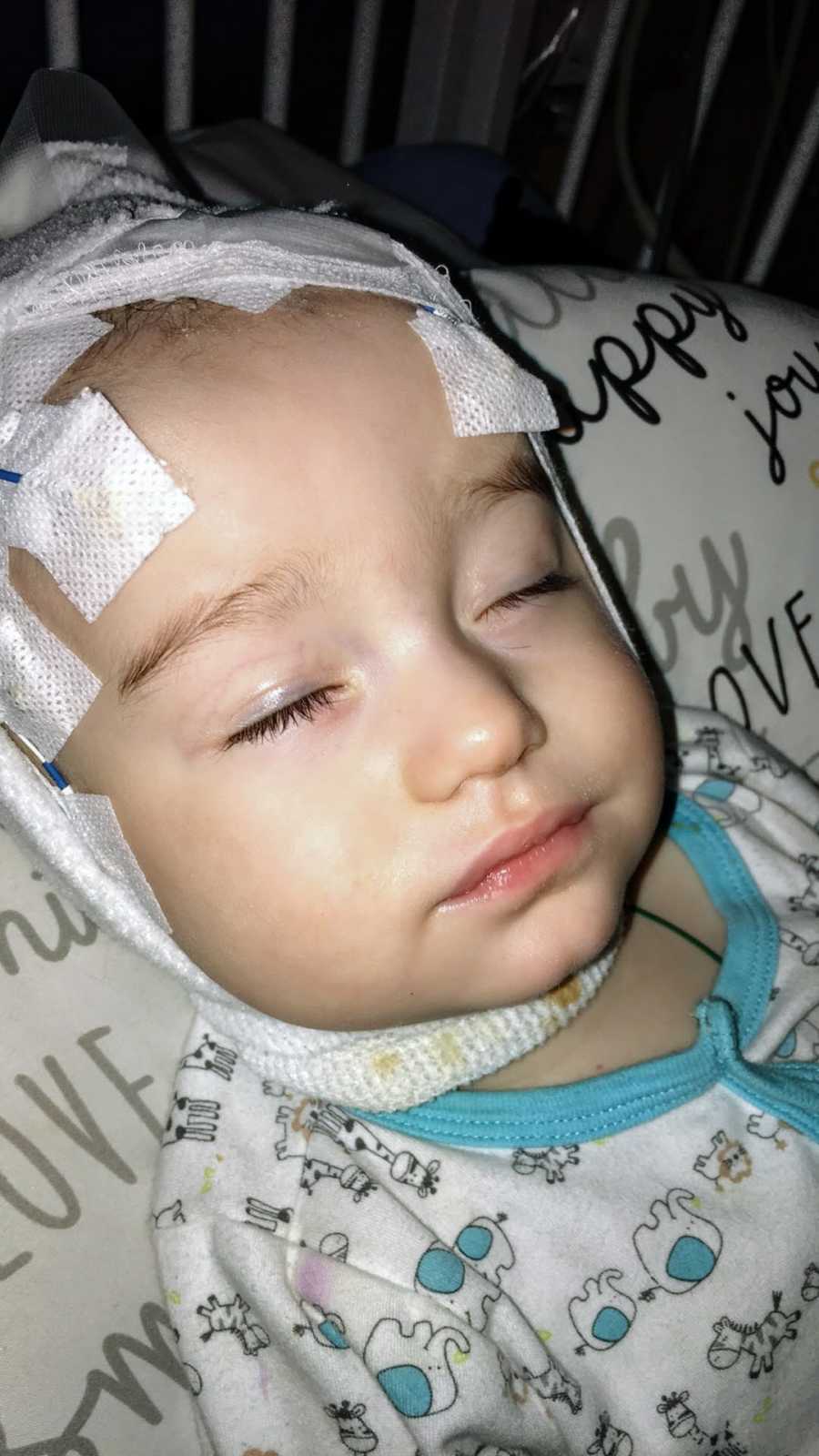
Non-ketotic Hyperglycinemia is a rare genetic disorder caused by a defect in the GLDC or AMT gene code, which affects the enzyme system that breaks down the amino acid glycine. The accumulation of glycine becomes toxic and severely affects the brain. NKH typically presents in the first week of life with low muscle tone, lethargy, seizures, coma, and apnea requiring ventilator support. The incidence of NKH is approximately one to 76,000. NKH can occur in individuals of any ancestry. There are around 500 children with NKH worldwide.
Lucas had his first ‘clinical’ seizures just before he turned 3 months old. It was terrible. He stopped breathing. My husband and I had to use all those skills they taught us as traumatized parents before leaving the NICU. But by the Grace of God, we got him breathing, and this would be our first of many hospitalizations over the coming year and a half.
After spending three days at PCH, we learned about the ‘three-month storm.’ A phenomenon that is common among babies with NKH. There is still no definite reason why it happens, but the general consensus is that babies grow rapidly from 0-3 months, using up and getting rid of glycine more efficiently. When growth slows, the glycine builds up before anyone knows to increase medications to combat the glycine. While admitted to the hospital, we learned how to place an NG tube and were sent home with rescue meds and oxygen to prevent us from having to go back to the hospital for seizures alone.
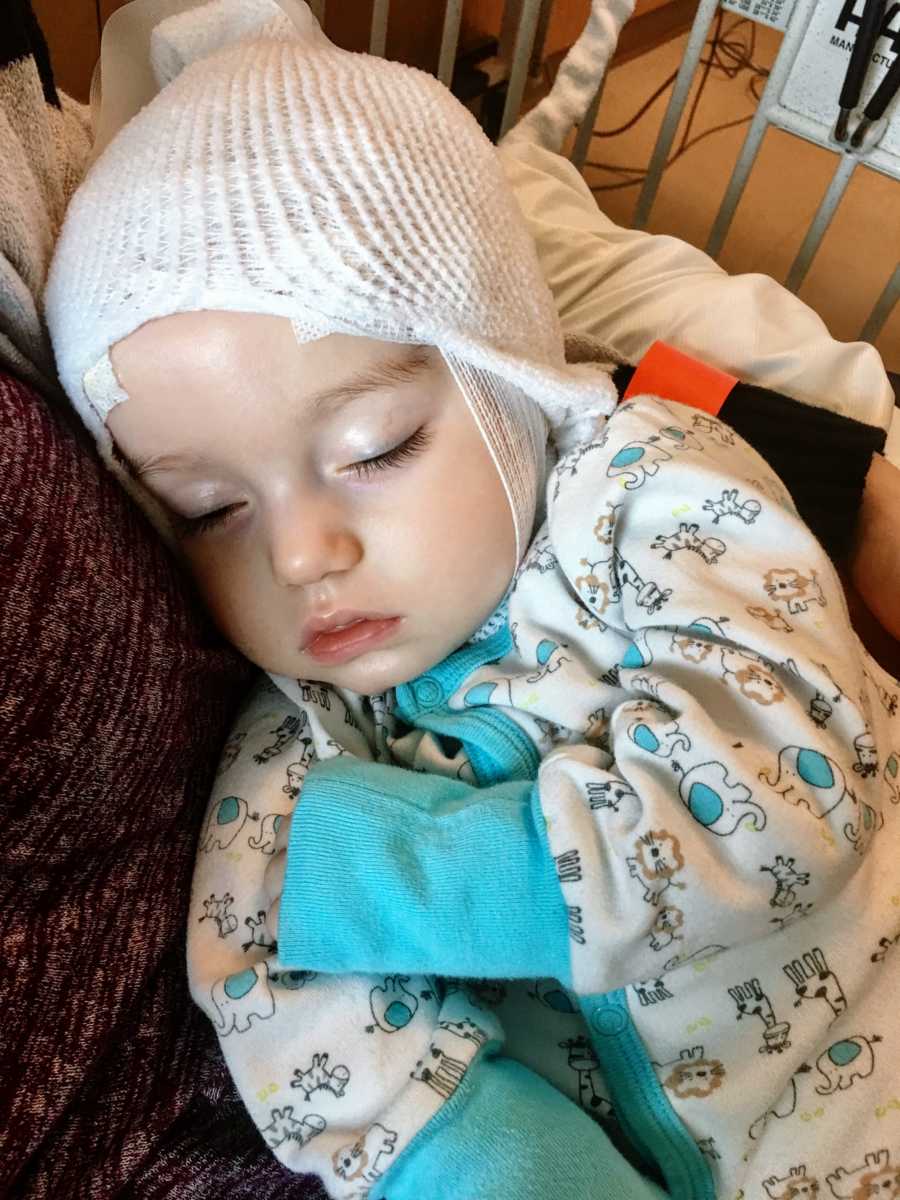
Lucas remained stable until October 2018, when he caught his first common cold. Something that most kids can fight off at home often lands kids with NKH in the hospital. This would be the start of many hospital stays for rhinovirus, enterovirus, and any other ‘common cold’ viruses he was exposed to. We later learned NKH compromised his immune system, so we started working diligently to boost and support his tiny immune system to keep him out of the hospital. I’m happy to report Lucas has been hospitalization-free since October of 2019!
Lucas has been diagnosed with just about every seizure type, temporal, frontal, complex-partial, tonic-clonic, and eventually infantile spasms. When he was 6 months old, he started having these weird movements that would last several minutes in a rhythmic pattern. We took him to his neurologist, and he recommended a 24-hour video EEG. During that hospital stay, we learned Lucas had infantile spasms. The worst kind of seizure type you can have as it causes the most damage.
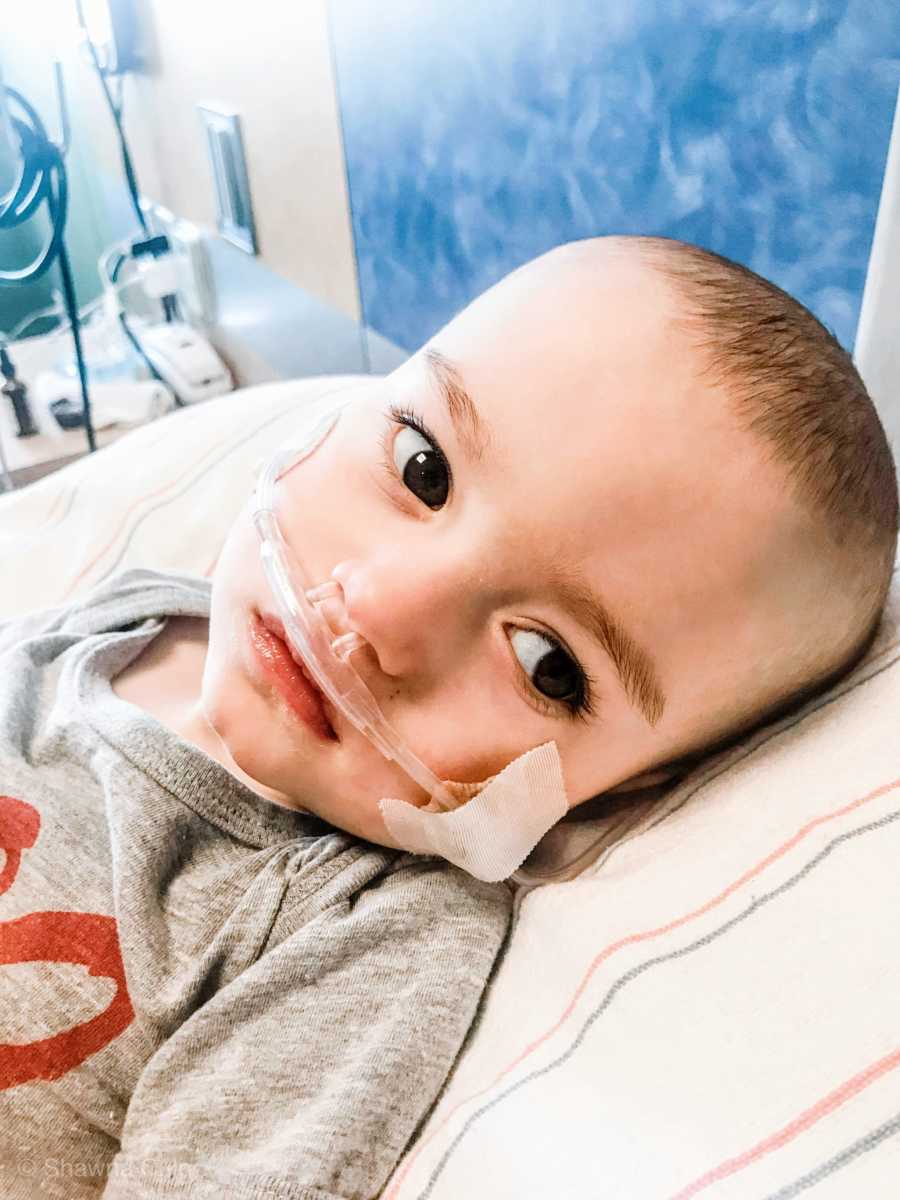
He had a great epileptologist on staff who gave us some very valuable advice on CBD dosing. We had started trying CBD to help Lucas with seizure control, but had no real guidance on how much he needed. Lucas’s neurologist then added another anti-seizure medication to his regimen, Onfi (clobazam). There is a lot of research regarding Onfi and CBD. Due to their unique interaction, Lucas takes a very low dose of this drug yet still benefits from its effects. Thank God the combination of CBD and Onfi worked, and we got control of the spasms pretty quickly. Lucas’s dad worked in the CBD industry for several years before Lucas was born, just another example of divine preparation.
His next EEG showed marked improvement and no spasms, incredible!
We started the Lucas John Foundation with a bucket list of issues to address during our NICU stay. We knew there were so many things that needed attention: the NICU, quality of care, and equipment for families going through a similar situation. In the past 2 years, research has come so far. Dr. Johan VanHove at the University of Colorado has been researching the Keto diet for glycine reduction and chaperone drug therapy. University of Notre Dame, UT Southwestern, and UCL London are all working on gene therapy using CRISPR vectors on mice. Clinical trials are just around the corner for several of these projects. In such a short time, we went from no hope to lots of hope. God is making a way where there is no way.
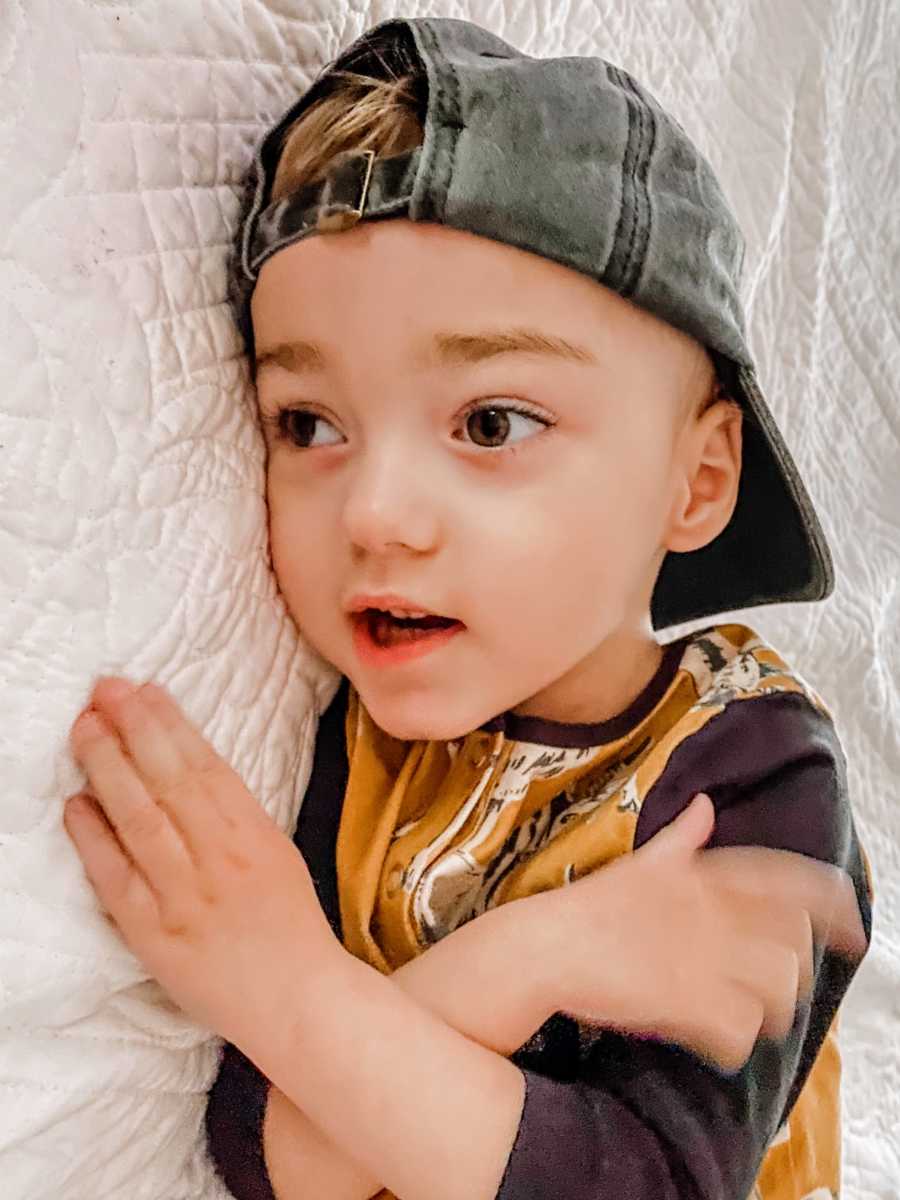
Our family care team consists of his Nonna, my mother-in-law, his Gigi (great-grandma), his auntie Kelly, my husband, and myself, along with my father-in-law (Pops), and Brandon’s brother, Alex, and wife, Alyssa. We all do our part to make sure Lucas has care 24/7. There is always someone with him, all hours of the night and day.
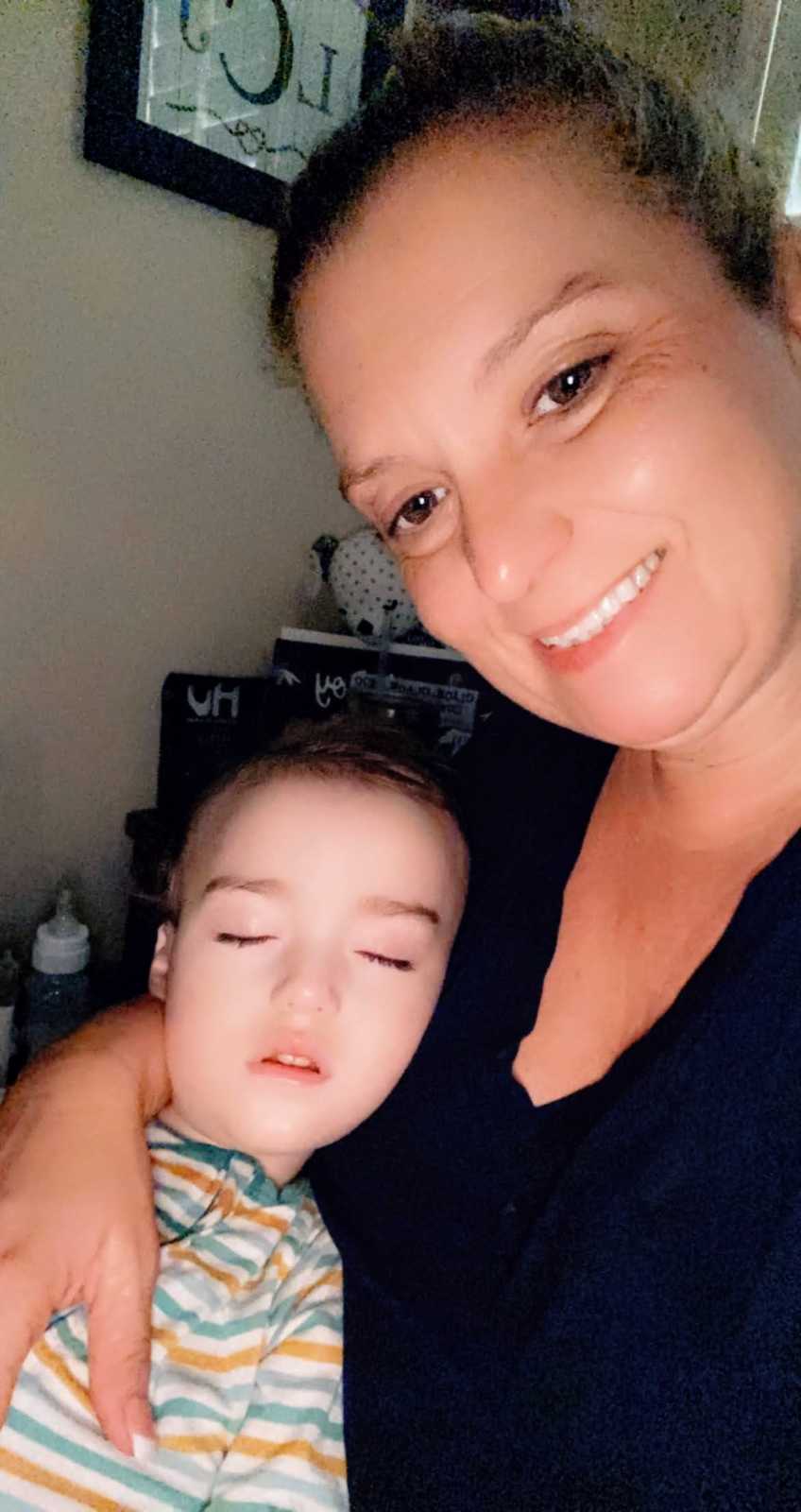
Lucas’s morning starts with his Nonna and Auntie Kelly. He gets his morning medications and meals. Then I get up, and we do one of the several therapies Lucas is involved in and any doctor’s appointments he may have. Alex and Alyssa are a massive help at this time of the day. They often help me during therapy or keep an eye on him while I’m preparing his food or packing his bag.
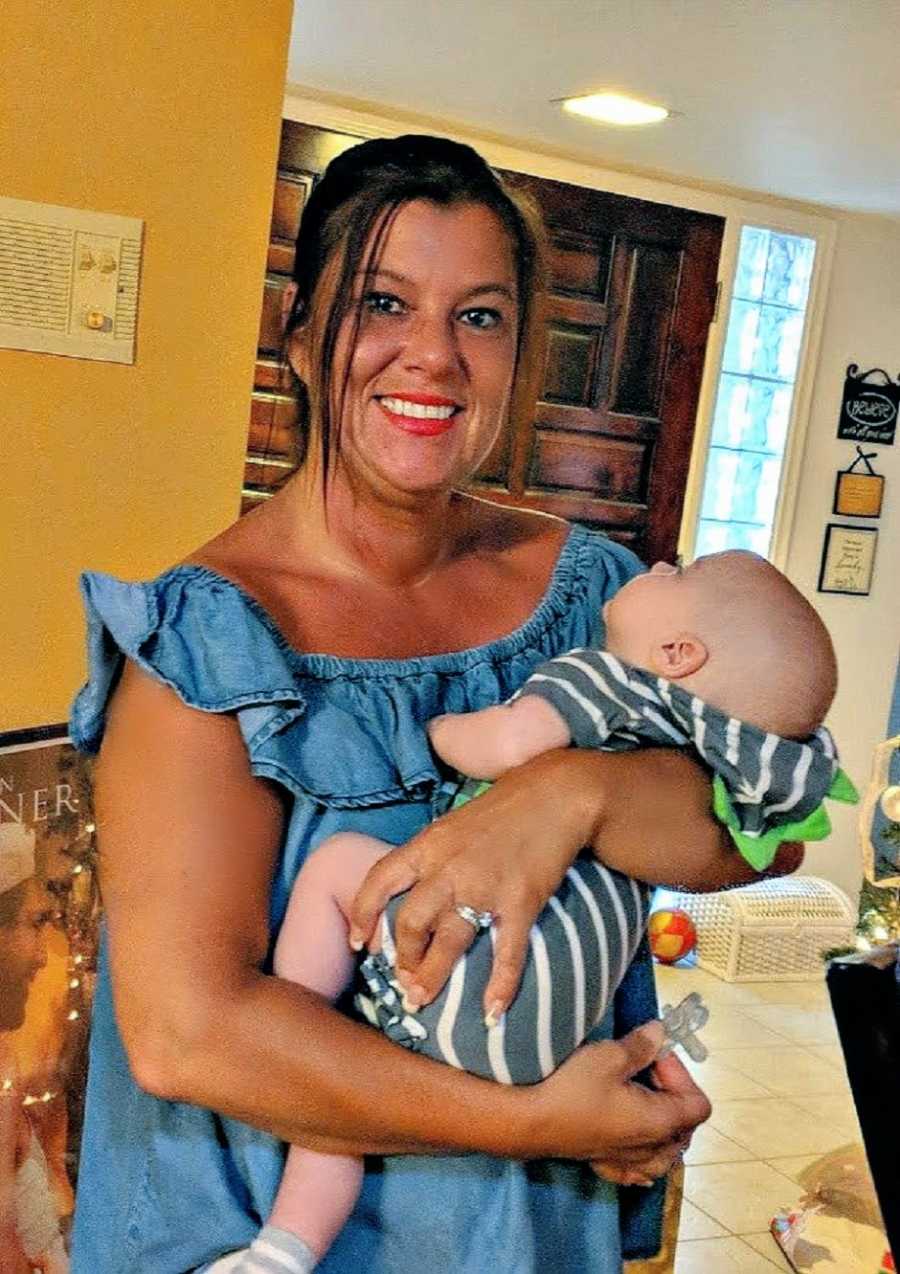
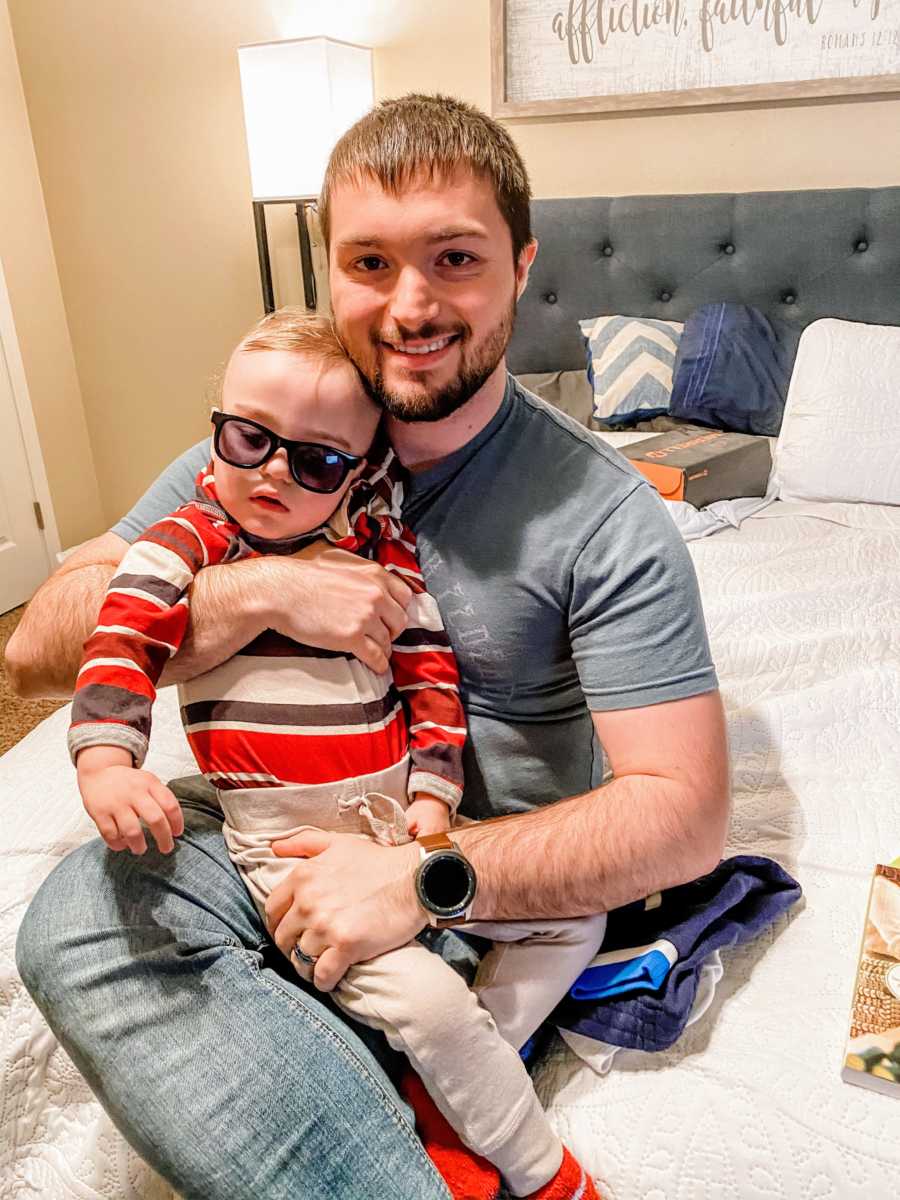
He spends time at Gigi’s house in the afternoon, getting QRI cold laser light therapy (and watches football, his favorite).
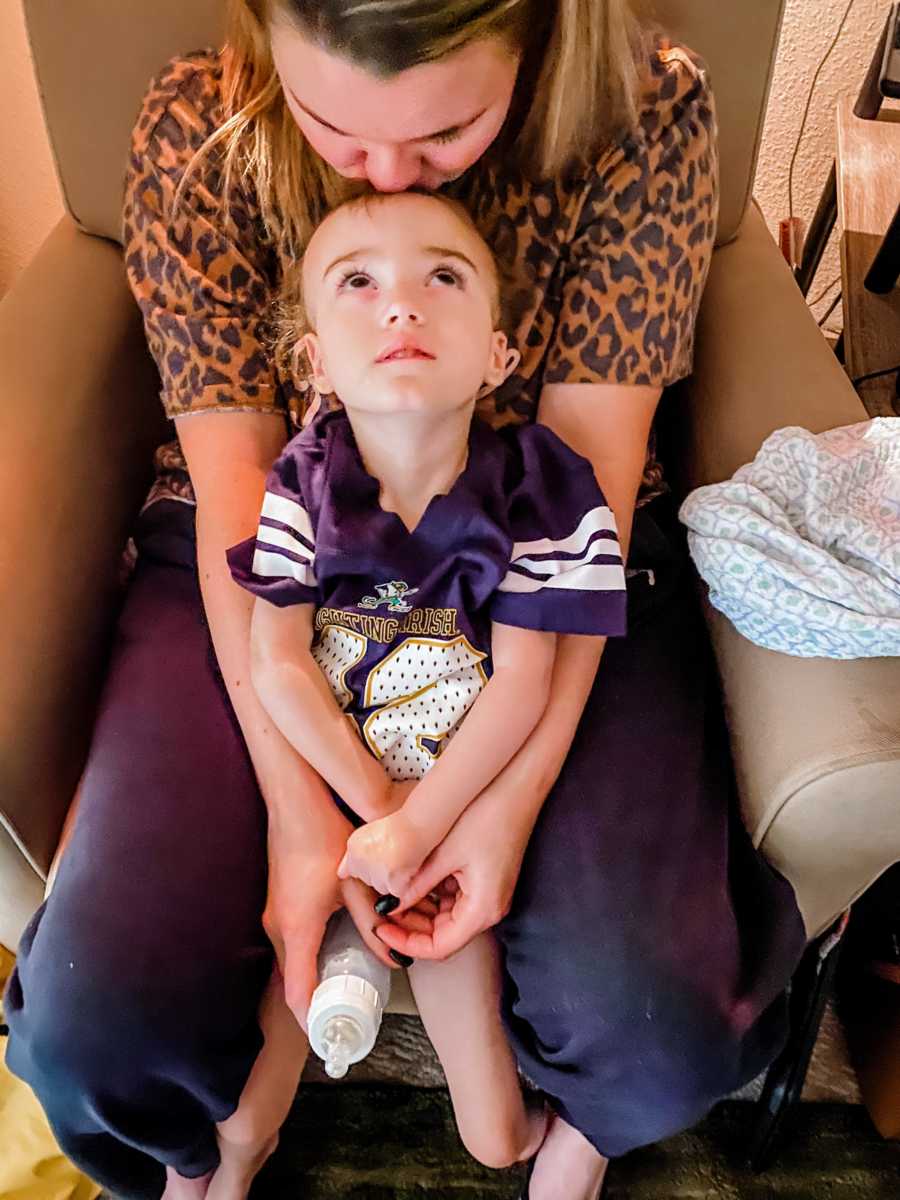
At night, his daddy and I spend the evening playing with him and getting all of his night time medications and meals. I stay up with Lucas until 3 o’clock in the morning, then his Nonna wakes up to start her shift, and the whole day starts over. His Pops enjoys taking Lucas on walks in his stroller and spending time outside.

We’ve experienced our share of ups and downs over the last 2 and a half years. Lucas was in and out of the hospital multiple times for viruses, seizures, or testing the first year and a half. Every hospitalization sets him back and causes him to lose any progress he’s made. It is a lot of work and takes complete dedication. Teething pain management has been by far one of our biggest hurdles. Teething pain causes fevers, seizures, extreme lethargy, and in some cases, the requirement of oxygen and feeding support. We are still battling his 2-year-old molars, and he’s almost 3!
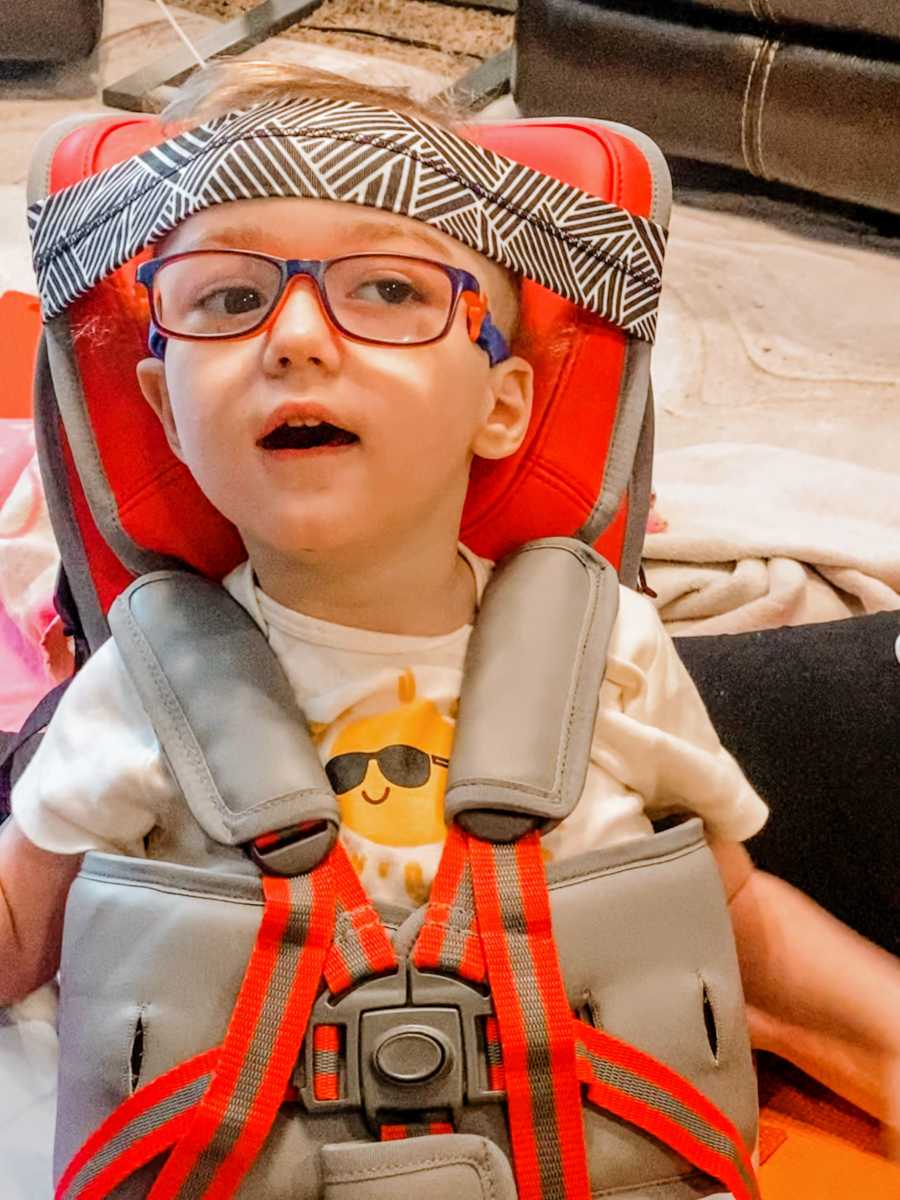
We pray for wisdom a lot. There have been many scary moments and many more happy ones. Lucas is a warrior, and we are blessed to be on this journey with him. We believe his testimony and unique therapies will help others. We will never stop seeking, learning, and trying anything to help him. We use the word impossible as motivation; we will do whatever it takes!
We are often so anxious to get out of a difficult situation we fail to grow through it. We are looking for a way out of it when we should be looking for the journey’s message. There is something God wants to teach us. He may be cultivating our character to be more like Jesus. God wants to grow us, and most often, He allows painful and challenging situations to do that. I humbly admit I want nothing more than to pray away every little problem, but I do not want my prayers to get in the way of God’s perfect plan. Sometimes God will push us to our absolute limits because that is how He stretches our faith and builds our character. I know the primary purpose of prayer is not to change the circumstances but to change us, and that is precisely what praying for Lucas did for our family.
Never stop learning. We thought we knew a lot—many of the therapies we had been exposed to before Lucas needed them. Before starting treatment, search for clinical studies relating to whatever new therapy you want to try, and you will be shocked at what you will find.”
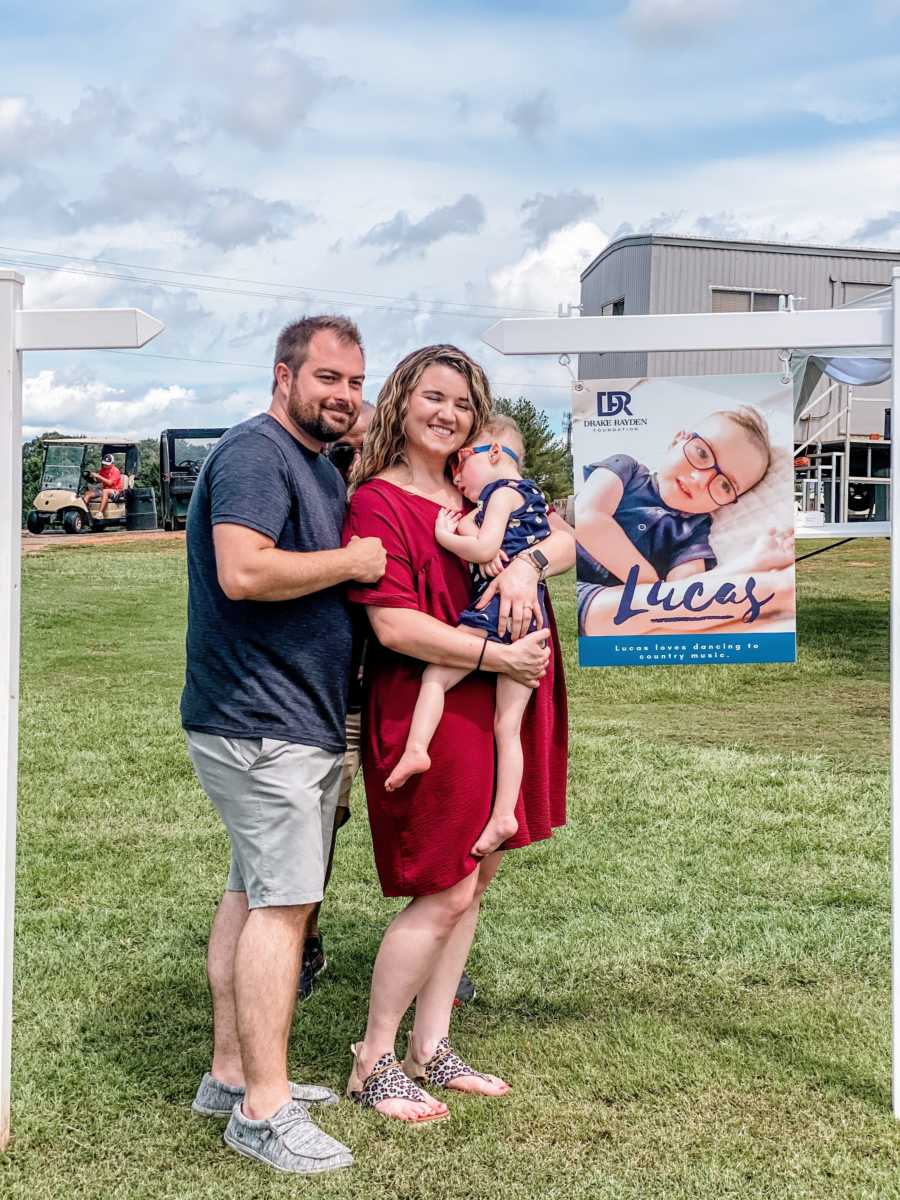
This story was submitted to Love What Matters by Chelsea Culp of Saving Lucas. Follow her on Instagram, Tiktok, and Facebook. Submit your own story here. Be sure to subscribe to our free email newsletter for our best stories, and YouTube for our best videos.
Read more stories like this:
Have you experienced the loss of a child? Please SHARE on Facebook and Twitter to make others aware there is a community of support available.

